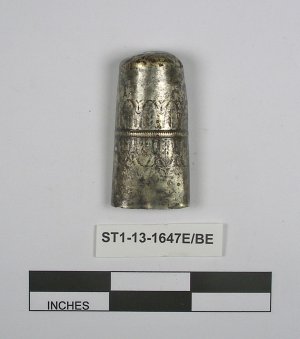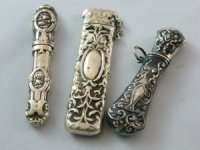Copper Pin Case

Conservator’s Notes
A visual examination of this object prior to treatment indicated the surface was covered in debris, especially the interior, which was filled with small stones and roots. Stable black-colored corrosion products were evident, but unstable light green spots of corrosion were also visible. Light green corrosion could be an indication of bronze disease, which is an active form of corrosion and must be removed to stabilize the object and ensure no further deterioration of the original material occurs. No analytical study was performed to confirm the corrosion was in fact bronze disease. In the X-ray, deep pitting was visible and these areas corresponded with the areas of green corrosion, indicating it’s an active corrosion. To our surprise, the X-ray also revealed evidence of a surface decoration that was being completely obscured by debris.
Due to the light green spots of active corrosion, this artifact was deemed in unstable condition and in need of immediate treatment. The treatment goal was to stabilize the object by removing all active corrosion and debris
Surface dirt was removed using a small dry brush. The mass of small stones and roots on the interior space were removed using a scalpel. After the soil removal, the stable black corrosion layers on the exterior surface were removed using a fiberglass brush and steel wool swabs. To reach the interior corrosion, a steel wool swab was used. Under magnification, active light green corrosion spots were carefully removed using a micro scalpel. The object was then rinsed with acetone to remove cleaning debris and any remaining soil. The object was then coated with an acryclic resin, Acryloid B-72, to provide a moisture barrier and to protect from oils on hands when handling.
Curator’s Notes
This pin and needle case is a great example of an artifact that is specifically associated with the presence of women at St. Mary’s City during the 17th century. Most women came to Maryland as indentured servants and typically worked in and around the house, and occasionally, worked in the fields. Pins and other personal expenditures were considered luxury goods. They were obtained through an allowance of money given by a husband to his wife – hence the term, “pin-money.”


